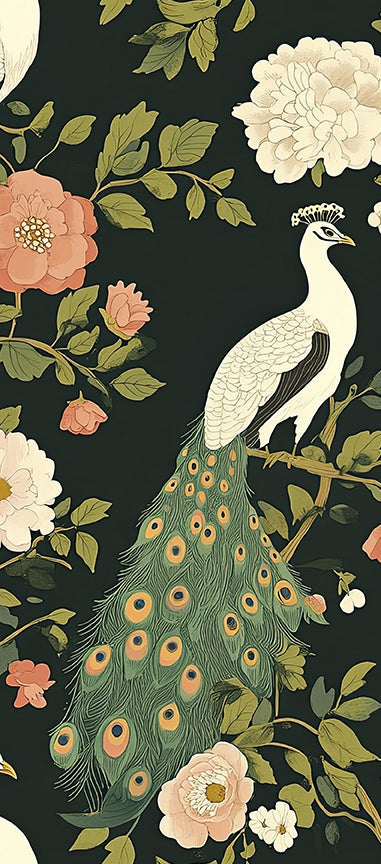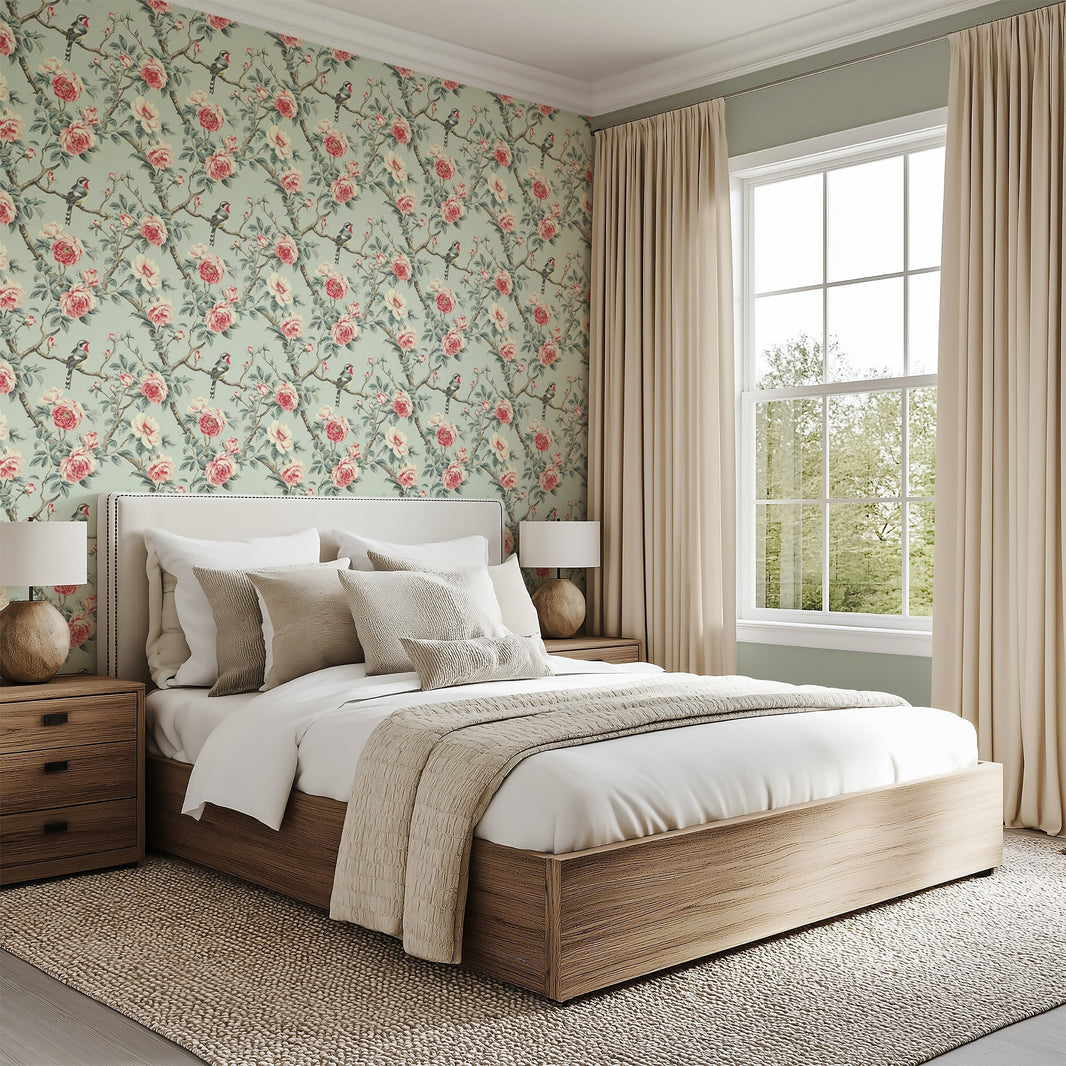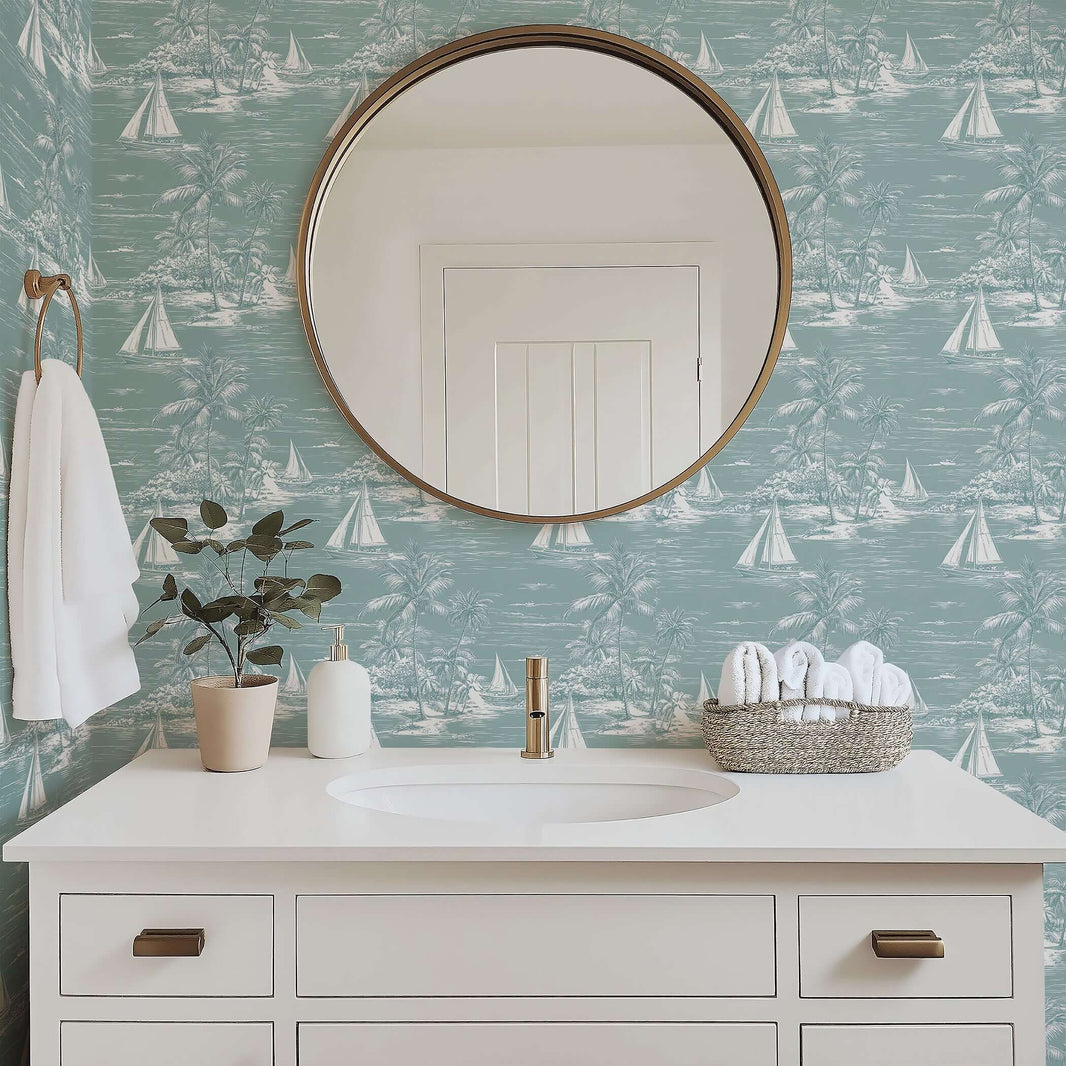Wallpaper Trends From Art Deco to Mid‑Century Modern: A Wallpaper History
Wallpaper is more than interior décor. It’s a reflection of evolving culture. From the glamour of 1920s Art Deco to the clean lines of Mid‑Century Modern, wallpaper trends reveal how we continue to interact with the space around us. Learning wallpaper history can help you shape your own spaces in inspired ways.
1. The Roaring 1920s: The Rise of Art Deco Wallpaper
Art Deco came to prominence in the 1920s and 1930s as a symbol of luxury, industrial exuberance and patriotic pride. Think skyscrapers, streamlined cars, and exotic themes, expressed through bold geometry and lavish finishes. Wallpaper of the period included:
-
Bold fan and scallop shapes inspired by architecture such as the Chrysler Building
-
Metallic accents—gold, bronze, chrome—that mirrored modern materials
-
Contrasting jewel-toned palettes: deep teal, emerald, burgundy, and navy
-
Symmetry and repetition, creating a sense of glamour and order
Modern Take: Classic Art Deco Fan Wallpaper
Large fans and metallic accents give this peel-and-stick wallpaper a retro vibe without looking out of date. Layer it behind a velvet headboard or study wall to introduce opulent drama.
2. Intertwining Influences: Transitional Periods and Eclectic Motifs
As Art Deco faded in the 1930s and 40s, designers embraced a more eclectic mix—Chinoiserie, organic abstract forms, and softer geometries appeared in wallpaper, reflecting increased travel, material access, and romantic design impulses .
This era hints at later movements: look for wallpapers with stylized foliage, muted maps, or simple curves. These softer motifs served as creative bridges between bold Art Deco and the minimalist Mid‑Century aesthetic yet to come.
3. 1940s–60s: The Era of Mid‑Century Modern Wallpaper
Post-war design emphasized functionality, technological optimism, and understated style. Wallpaper patterns evolved to feature:
-
Clean geometric shapes: hexagons, circles, and linear grids
-
Muted or earthy tones like olive green, mustard yellow, slate blue
-
Minimalist repetition and modularity—patterns repeat in compact logic
Designers embraced these wallpapers as essential tools for zoned living areas—living rooms, studies, nurseries. Everything was geared toward streamlined living, balanced decoration, and ease.
Featured Pick: Golden Hour Arches Wallpaper
Though named “Golden Hour Arches”, its clean geometric pattern feels entirely at home in a modern Mid‑Century interior. Picture it in a study or living room accent wall: sleek, stylish, and effortlessly nostalgic.
Bold Vintage Flair: Mid-Century Modern Palm Springs Wallpaper
This peel-and-stick vignette recreates a sun‑swept California desert scene. It’s playful yet refined—a perfect backdrop for a vintage walnut desk, rattan chair, and linear shelving.
4. How to Use These Styles Today
Accent Walls vs. Full Rooms
A bold geometric Art Deco pattern like Emerald Luxe Palm Deco shines in small doses—behind a bed or couch—while a full room calls for a more muted choice like the Honeycomb Luxe.
Mix & Match
Combine fan wallpaper with pared-back décor such as walnut credenza, boucle chairs, and sleek lighting for equilibrium. Add brass sconces and sculptural planters for symmetry to an otherwise bold Mid‑Century mural.
Color Themes
Jewel tones (emerald, navy, burgundy) scream luxury. Earth tones (olive, beige) induce coziness. Use wallpaper to develop coordinating palettes with pillows, rugs, and art prints.
5. Why This Interior Design History Still Matters
-
Cultural Storytelling – Your walls can carry a narrative: economic boom, post-war optimism, technological revolutions.
-
Sustainable Longevity – These styles weather trends; today’s playful retro remains tomorrow’s timeless.
-
Better Design Strategy – Knowledge of scale, symmetry, and color theory helps you select décor with purpose.
6. The Evolution of Wallpaper as an Expression of Identity
Fashion and architecture may receive the most attention when it comes to the history of design, but wallpaper has its own rich story to tell—one that’s inextricably connected to social values and aspirations of each era.
Art Deco: Old Money Glamour in the Machine Age
A dizzying array of Art Deco wallpaper designs became available during the 1920s and 30s when a flurry of industrial advancement and cultural changes were coming to a head after World War I. Masses of people longed for the glamour of Hollywood and jazz clubs, as well as the reassurance of geometric organization. The result was that their homes looked decidedly more worldly and optimistic.
Art Deco wallpaper played the part of aspirational luxury to the masses. Metallic finishes, Egyptian and Asian themes, and formal symmetry allowed homeowners to convey high style, even in an otherwise humble space.
Today, that sense of luxury and symmetry is still attractive—especially when given a modern makeover.
Try this look:
Hang the Deco Forest Luxe Wallpaper in a formal dining room. Accessorize with an antique mirror, gold flatware, and jewel-toned velvet curtains. Your guests will feel like they’re stepping into old money in a very fresh way.
Mid-Century Modern: Making Sense of the Post-War World
Post World War II optimism and a return to function brought people back to simplicity in form and design. Families were expanding and homes needed to be practical and affordable to both provide for and reflect the needs of returning soldiers. Wallpaper design became less decorative and more focused on livability.
Patterns and color palettes from the late 1940s to the 1960s were inspired by this fresh mindset with everything from earth tones, atomic patterns, and repeated, balanced designs to fluid shapes and organic motifs.
Deco may have brought on decorative excess, but Mid-Century wallpaper was all about streamlined reassurance. It had a calming minimalism that brought order and control. It also is repeatable, and in smaller doses—which is part of the reason it’s still so popular today—doesn’t overpower a room. It works in traditional or modern décor.
Try this look:
Apply the Mid‑Century Link Up Wallpaper to a home office or reading nook. Style the space with a walnut writing desk, a molded Eames-style chair, and warm brass task lamp. Your result? A space that feels productive, cool, and distinctly timeless.
7. Wallpaper as a Time Machine: Layering Eras with Intention
One of the most exciting things about today’s design landscape is the freedom to mix eras and aesthetics. Want to pair an Art Deco wallpaper with Scandinavian furniture? Or offset Mid‑Century shapes with contemporary artwork? Do it—intentional layering is what makes modern interiors feel truly personal.
Here’s how to blend Art Deco and Mid-Century Modern influences without creating visual chaos:
Use Color as Your Unifier
If your wallpaper features navy and gold, echo those tones in accent pillows, art, or lighting. The Jazz Age Chic wallpaper, for instance, pairs beautifully with deep blue upholstery and brass hardware, regardless of whether your furniture leans vintage or modern.
Contrast Curves with Angles
Art Deco’s curves and flourishes contrast nicely with Mid‑Century’s linear minimalism. A curved Deco-style wallpaper balanced by a rectangular coffee table or clean-lined shelving creates a dynamic tension that keeps your room interesting.
Limit Pattern Frequency
Stick to one patterned focal point—usually a single wallpapered wall. Let the rest of the room breathe with solid, textured surfaces. This lets your wallpaper truly shine and prevents visual overload.
8. Why Wallpaper Is Experiencing a Renaissance Today
After years of stripped-down white-on-white minimalism, homeowners and renters are embracing wallpaper—and not just to recreate their childhood bedrooms. Peel-and-stick technology has made high-design wallpaper accessible and renter-friendly. But more important than how it’s made or how it sticks, wallpaper has a power that paint never will: to convey visual depth, texture, and emotion.
Whether you’re creating a cozy reading nook, styling a Zoom-ready home office, or updating a guest bedroom, wallpaper can instantly set the mood for the kind of experience you want to create.
Plus, when you choose a pattern rooted in Art Deco or Mid‑Century Modern style, you’re not just decorating—you’re using a visual vocabulary that has spoken to people for over a century.
9. Small Spaces, Big Style: Where to Use These Designs
If you’re not ready to commit to wallpapering an entire room, here are a few impactful places to introduce pattern in manageable doses:
-
Entryways – Welcome guests with a hit of glamour using Gilded Palm Luxury wallpaper behind a console table.
-
Bookshelf backs – Line the back of built-in shelves with Cowboy Trails wallpaper for a pop of personality.
-
Closets or nooks – Turn forgotten corners into visual moments with Vintage Floral Bouquet or Golden Tapestry Revival wallpaper.
-
Bathroom powder rooms – Use wallpaper to make a bold, unexpected statement in a small space.
Final Thoughts and Recommendations
Wallpaper is history you can live in. When you choose a design based in the Art Deco and Mid‑Century Modern traditions, you bring home more than color and pattern. You bring a little bit of culture to your life.
Bold or subtle, glamorous or grounded, in Wall Artifacts you will discover that there are timelessly elegant options to create a space that is truly a curated reflection of who you are… and where design came from.
-
Start small with accent walls using impactful prints like Deco Diamond Noir wallpaper
-
Build layers around these patterns with period-appropriate furnishings (wood, brass, ceramic)
-
Design for life—select curated, functional pieces that age gracefully
Every wallpaper you choose is a conversation between your space’s past and its future. Whether you're inspired by Art Deco’s elegance or Mid‑Century Modern's clarity, Wall Artifacts has options that deliver both soul and longevity.
Curious to explore more?
Browse our full Art Deco & Mid‑Century Modern wallpaper collection for peel-and-stick or traditional styles that bring these design eras to life—in your living room, office, or bedroom.







